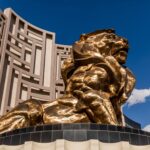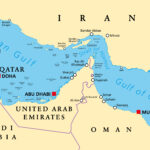Rescuers extended their search on Friday to shattered houses close to the epicenter of Christchurch’s deadly earthquake, but rain and cold dimmed hopes of finding more survivors of New Zealand’s worst disaster in decades.
The arrival of teams from Britain and the United States, who joined rescuers from Japan, Taiwan and Australia, allowed the difficult search to push into beachside areas hardest hit by Tuesday’s 6.3 tremor in the country’s second-biggest city.
In the community of Mount Pleasant, where the shallow quake opened huge cracks in hillsides and sent car-size boulders thundering down on homes, a small number of people had set up a makeshift tent city in a school.
“They’ve fled to the four corners of the compass,” shouted one unnamed man, gesturing to empty streets in what had become a virtual ghost town of shattered houses and twisted streets.
The disaster has so far claimed 113 lives, and authorities warned that toll was set to climb sharply in coming days with grave fears for more than 200 people still missing.
Fears of a disease outbreak from contaminated water and broken sewage services forced the closure of an emergency centre and relocation of more than 100 people to another center outside the city of 400,000, where a night curfew remains in place.
Many of the missing were students who had come to the city, one of New Zealand’s most attractive, from Japan, China, Taiwan and India to learn English against a backdrop of the country’s dramatic Southern Alps.
“For those people in those far off places, your families are our families, your children are our children,” Christchurch Mayor Bob Parker said in a message to their families overseas, promising searchers would not abandon hope.
Tales were emerging of daring rescues, with doctors in the depths of one collapsed building having to use a Swiss Army knife to amputate one man’s legs to free him.
“There wasn’t really any other option. Essentially the procedure was performed with a Swiss Army knife. I know that sounds terrible, but that’s all we had,” doctor Stuart Philip told the Dominion Post newspaper.
Rescuers pulled aside massive stone blocks and 13 one-ton church bells from the toppled spire of the landmark Christchurch Cathedral in the city heart, where as many as 22 bodies could now be trapped in a square popular with tourists.
“We’re having to move extremely slowly, we’re working brick by brick. There are a lot of loved ones in here that we want to get out,” rescue worker Steve Culhane told Reuters.
Police said 228 people were listed as missing. The list could include many people whose bodies have been found but yet to be identified. More than 2,500 were injured in the quake, and more than 160 of them seriously.
Thousands of survivors queued for food, water, and cash handouts from the government meant to help them survive, but police said there was no need to stockpile petrol or supplies.
Economic Impact
More than half of the dead have come from the ruin of the former Canterbury Television (CTV) building, which housed a popular English language school. Around 65 people, including many missing Japanese and Chinese students, are believed to be still inside, caught as floors pancaked down on to one another.
“We’ll keep searching until such time as we have satisfied ourselves beyond all possible doubt that there is no-one left still to rescue in terms of an active find,” said fire rescue chief Jim Stuart Black.
An estimated 70 people have been rescued alive, but the last survivor was pulled out on Wednesday mid-afternoon.
Ratings agency Standard & Poor’s backed New Zealand’s ability to withstand the massive economic impact of the quake, saying the country’s ‘AA+’ foreign rating with a negative outlook was secure.
Early estimates of insurance losses have ranged between $3 billion and $12 billion. Prime Minister John Key said the country’s Earthquake Commission (EQC) disaster fund stood at around NZ$6 billion before the quake, with reinsurance in place and further government backing as needed.
Earthquake recovery minister Gerry Brownlee, a local member of parliament, said costing the quake was guesswork.
“I would expect that this will go beyond NZ$10 billion ($7.5 billion), and the figure will be somewhat north of that,” he told reporters.
(Additional reporting by Mantik Kusjanto in Wellington; writing by Rob Taylor and Gyles Beckford; editing by Ed Davies and Miral Fahmy)
Topics Japan
Was this article valuable?
Here are more articles you may enjoy.


 Reserve Strengthening for Casualty Lines Not Over: Moody’s
Reserve Strengthening for Casualty Lines Not Over: Moody’s  Everton FC Buyer Accused of Fraud, Double-Pledging Assets in Lawsuit
Everton FC Buyer Accused of Fraud, Double-Pledging Assets in Lawsuit  Hackers Behind MGM Attack Targeting Financial Sector in New Campaign
Hackers Behind MGM Attack Targeting Financial Sector in New Campaign  Three Insurers Reject Chevron’s $57 Million Claim for Iran Oil Seizure
Three Insurers Reject Chevron’s $57 Million Claim for Iran Oil Seizure 

